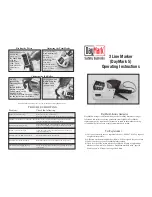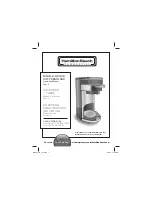
n
HIGH ALT I T U D E
High elevations may make dough rise faster. We recommend that you try the recipe as it is printed
first. The dough ball should be round, smooth-textured, soft and slightly tacky to the touch. If you
find the results are unsuccessful, decrease your yeast 1/4 teaspoon at a time. You may also have to
increase the liquid because of the drier air; start with 1 tablespoon and increase it if necessary. The
addition of gluten will help the structure of the bread. The recommended amount is 1 teaspoon per
cup of flour unless specified otherwise in the recipe.
n
FREEZING BAKED BREAD
When freezing bread and rolls, cool them before wrapping in plastic wrap. Place them in a plastic
bag and seal it. Bread may be frozen for up to six weeks. When you thaw, partially open the
wrapping to allow the moisture to escape gradually for best results.
n
FREEZING DOUGH
At the end of the dough program, you may remove the dough and freeze it for baking at a later
time. Form the dough into the desired shape and immediately freeze for one hour to harden.
Remove from the freezer and wrap in plastic wrap. Next, place it in a plastic bag and seal. Dough
can be kept in the freezer for up to four weeks. Thaw the dough in plastic bag in the refrigerator
overnight or for several hours. Unwrap and place on baking container. Cover and let stand in
warm, draft free place until double the original size. Because the dough is not room temperature,
you will find it takes longer than usual to rise. Bake according to recipe instructions.
If additional assistance is needed, expert help is available from Toastmaster
®
(1-800-947-3744)
or from RED STAR
®
YEAST & PRODUCTS (1-800-445-4746).
13














































